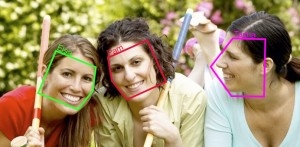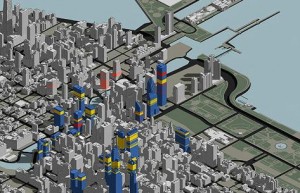I haven't regularly watched television in nearly 8 years. There isn't a television in my home or my office and when I'm near a television, it doesn't occur to me to turn it on. I am seriously out of touch with what this industry has to offer but my life doesn't lack content. It is just filled with media that I'm choosing to watch or to listen to, when there's time and interest. And, I don't use a terminal that has "channels" in the old fashion broadcast television style.
I'm certainly not alone in making media choices on a daily or hourly basis via a device other than a TV set. In fact, the whole Web 2.0 and social media movement has provided entertainment "on demand" and just-in-time informational outlets for huge segments of society. And some televisions are already Internet-connected terminals capable of much more than only showing broadcast content.
Many consumers in 2020 will be buying and regularly using devices first introduced this year at the International Consumer Electronics Show. According to an IEEE Spectrum article on the upcoming CES, television is going to be prominently featured among the 2012 edition's announcements. Television sizes and resolutions continue to grow. But this year, as in the past two years, the theme is 3D TV. Manufacturers of displays and televisions are steadily improving what they provide for those who want to watch 3D content. The problem, some believe, isn't the idea that we need 3D, or that there is a shortage of 3D content. It's the glasses. We need solutions that don't require glasses. Stream TV's glasses-free Ultra-D 3D technology is among the popular tech topics for the past three weeks.
Perhaps one of the reasons that people are enamored with 3D is that it mimics reality, the real world. If we are looking for realism, perhaps we also want realistic content. Reality TV has grown and is not showing signs of going away. Unfortunately, from what I've seen of it, Reality TV doesn't have much to do with real Reality.
Reality TV in 3D is getting closer to what might be possible using one of the other hot segments on display at CES this year: eyewear for hands-free Augmented Reality.
Who says glasses are the problem? I and several billion other people wear glasses daily. At least a dozen companies, including Vuzix, the most well-known name in the segment, will show their latest eyewear at CES. While it will show off a lightweight dual-screen model, Vuzix has already disclosed that the next optical see-through displays they will release in 2012 will be monocles, not as shown in this illustration.
In addition to using such appliances to display digital content over the real world (AR), extending them with a couple of cameras (particularly dual cameras for stereoscopic capture) could give us Reality TV in 3 dimensions with a first person point of view. Imagine that you could tune into the life of a famous person or an animal, seeing the world from their eyes. Could this be reminiscent of the feeling we get from following prolific people on Facebook or bloggers ("life bloggers")? Only, in the scenario I'm proposing, text and photos would be replaced with a live stereo video and audio feed. Will this redefine what people consider to be entertaining or boring?
Will this be television in 2020 or just an ordinary pair of glasses?



